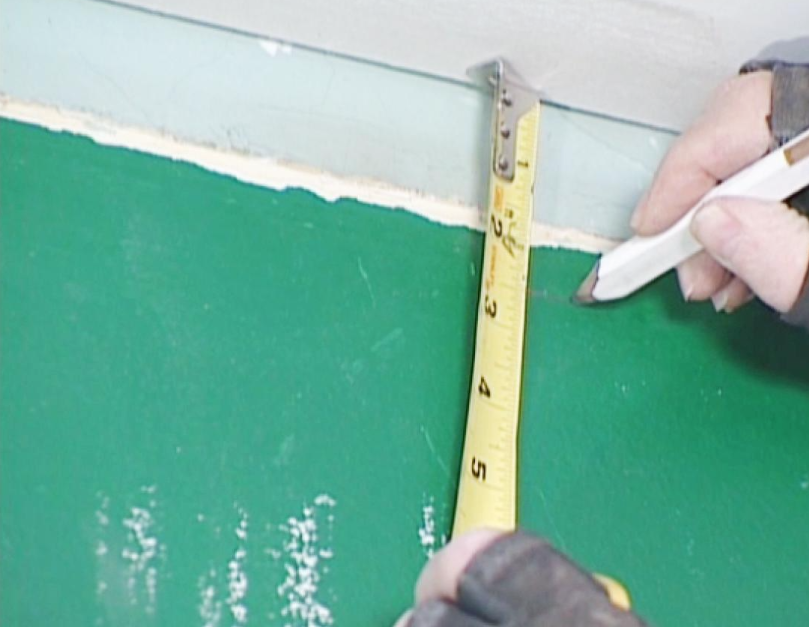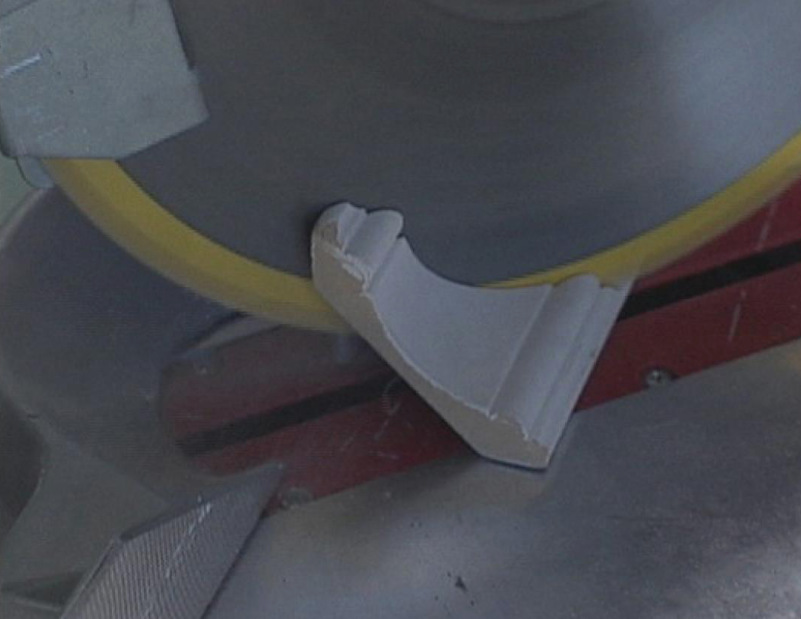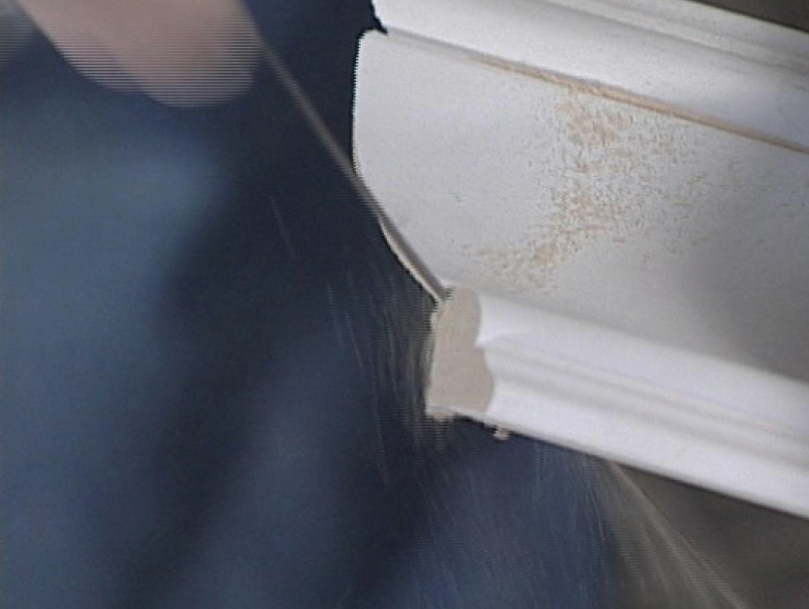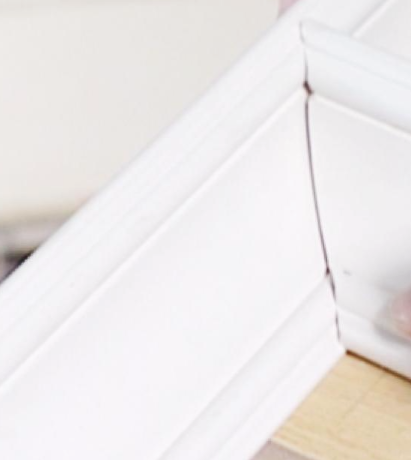INTRODUCTION
Determine Which Type of Crown Molding to Use
Wood molding can be expensive. You may want to use molding made of MDF, which is a combination of wood and resins and comes pre-primed and ready to paint. If you decide on MDF, though, don't use it in a kitchen or bathroom as the humidity can cause it to warp.

Cut the Corners of the Molding
The hardest part of installing crown molding is cutting the corners. You can't do it like any other trim pieces because the molding sits at an angle between the wall and the ceiling. Using a coping saw is the easiest way to cut the corners because a coped joint is tighter than a mitered joint. A coping saw is also good for a beginner. Any gap in a coped cut can be easily concealed with a little bit of caulk.
Another tool that will make the job easier is a power miter saw. It's accurate and makes a cleaner cut than a plastic miter box.

Measure and Mark the Wall
Measure the wall for the length of your first piece of molding. Mark the wall to show the bottom edge of the molding.
Cut the First Measured Piece
Once you determine the length, take the molding to the saw and cut in a straight line at a 90-degree angle -- you want both ends of the molding to butt against the side walls.
Cut the Next Piece to Fit an Inside Corner
Move the miter saw guide to the 45-degree angle point and set the molding into place. The edges need to be pressed firmly against the saw table and the vertical side fence. This is the first key to a straight cut and a good fit.

Understand How the Pieces Fit Together
The second key is not so obvious and can be a bit confusing. The molding is upside down, meaning the edge against the vertical fence is the bottom of the molding and the edge against the table is the top of the molding (think of your table as the ceiling).

Cut the Molding at a 45-Degree Angle
With the molding in the proper position, use a 10-inch saw blade to cut a perfect 45-degree angle. It is also important here to make sure you cut the molding angle in the right direction: for an inside corner, the bottom of the molding should be longer than the top part of the molding; for an outside corner, the top of the molding will be longer than the bottom.

Cope the Joint
When you cope a joint, you scribe the end of one molding to the face of the other. Darken the front edge with a pencil and then use the coping saw to cut as close to the line as you can. You need to hold your thumb against the side of the blade to guide the start of your cut. Start slowly, so you don't splinter the delicate edge. Cut at a slight angle. You want to cut off more from the edge of the molding and you don't need to cut it all at one time. Cut out small pieces to make creating this coped joint easier.

Check the Fit
Check the fit against a scrap piece of molding to reveal any gaps that need to be trimmed. Use the coping saw to cut off the high points.
Attach the Molding to the Wall
Once the fit is right, take the molding to the wall. For a long piece, you'll need some help holding it. Push the end into the corner, making the fit as tight as possible; attach it to the wall. Use the caulk gun to cover up any gaps in the joint (make sure you're using paintable caulk). You may need another small piece of molding to finish out the wall. |








